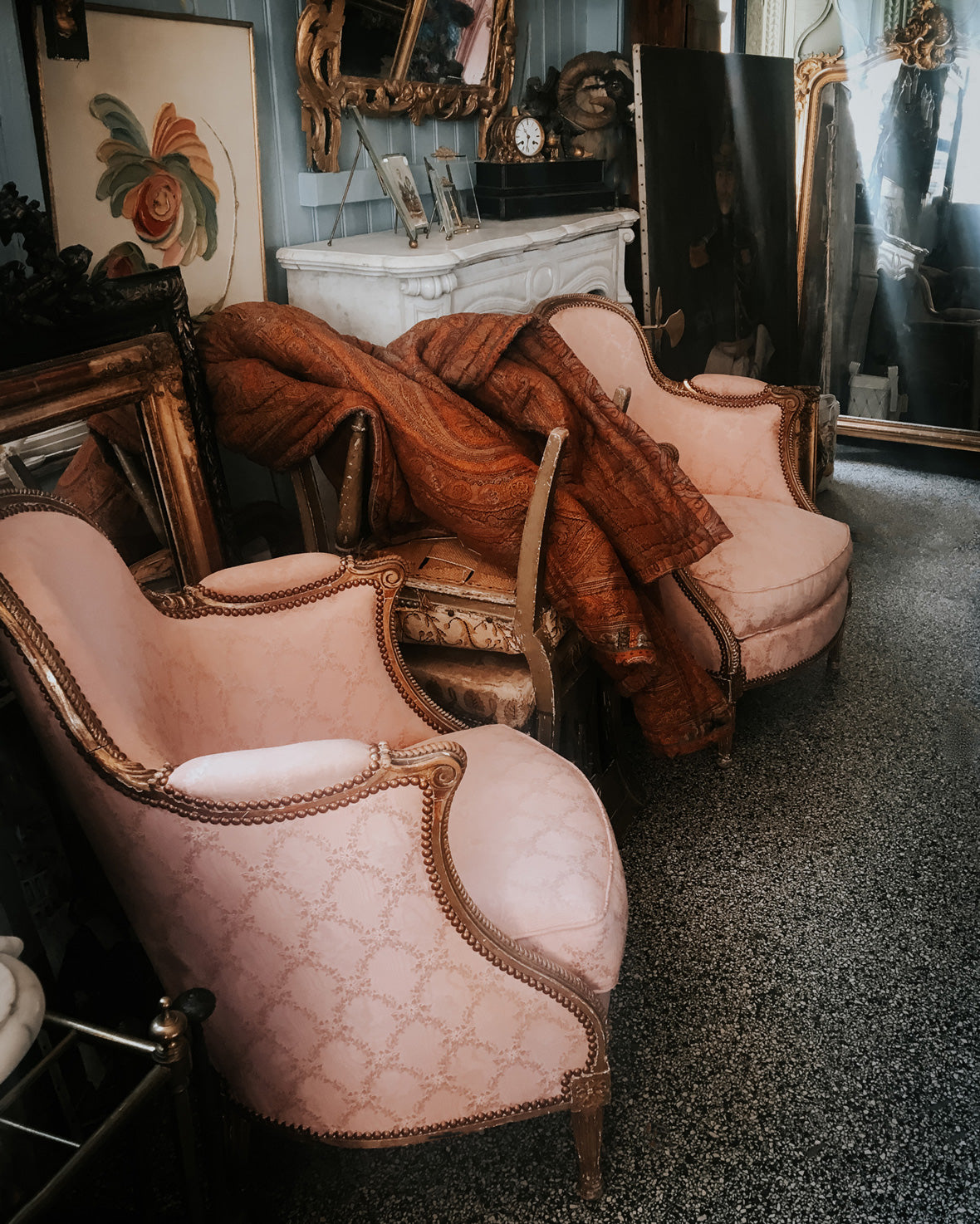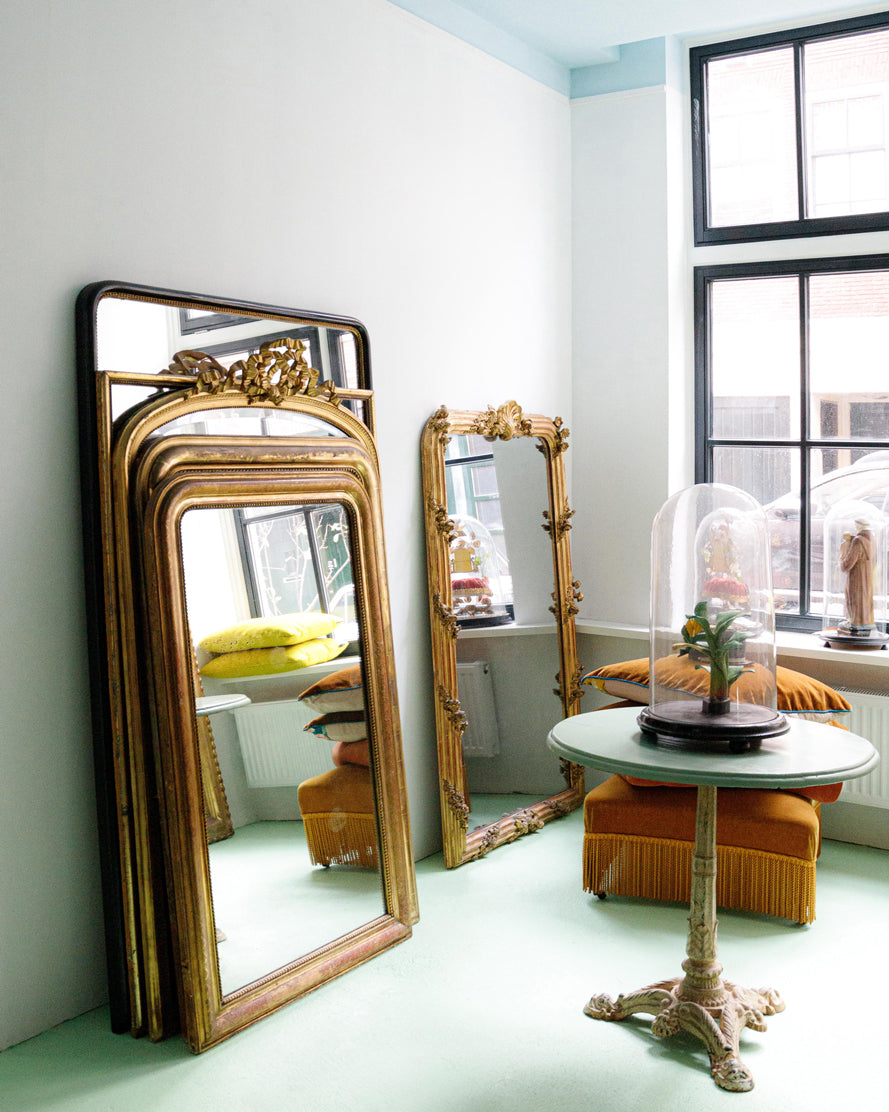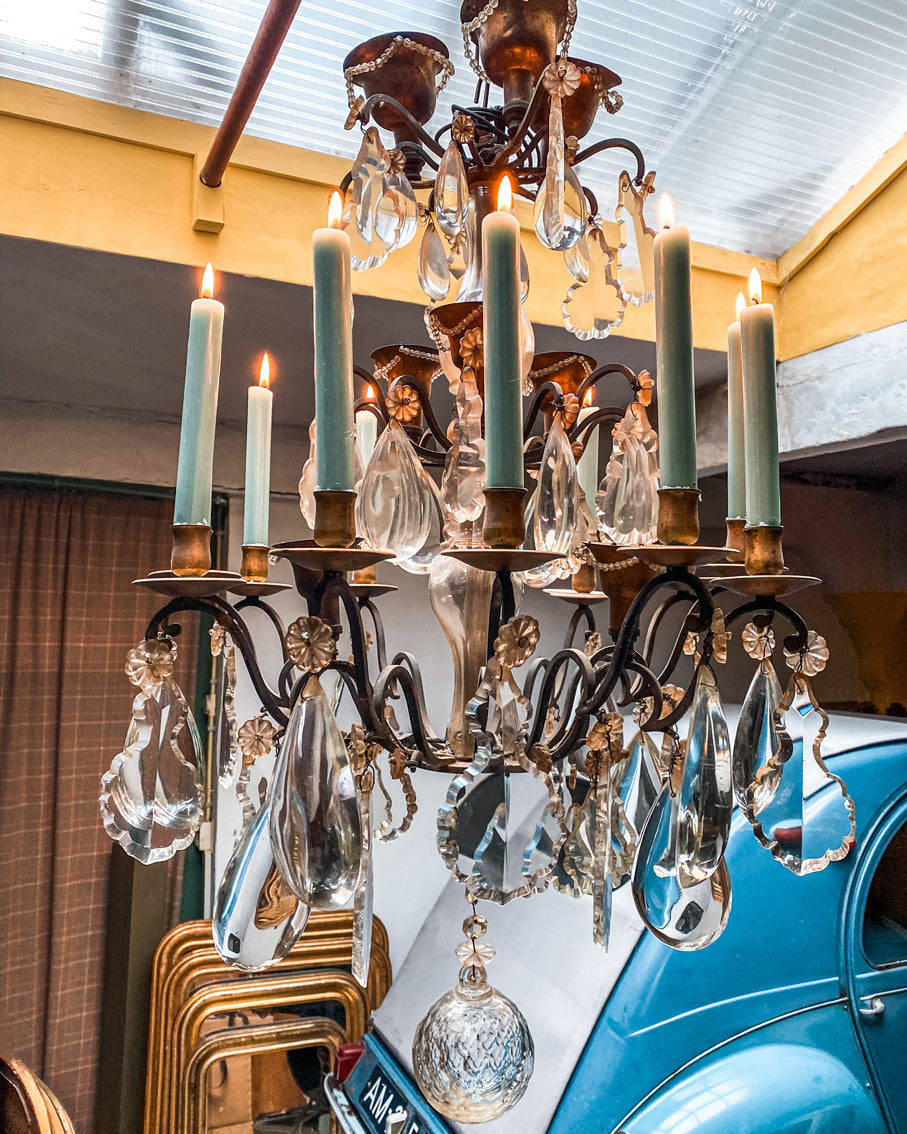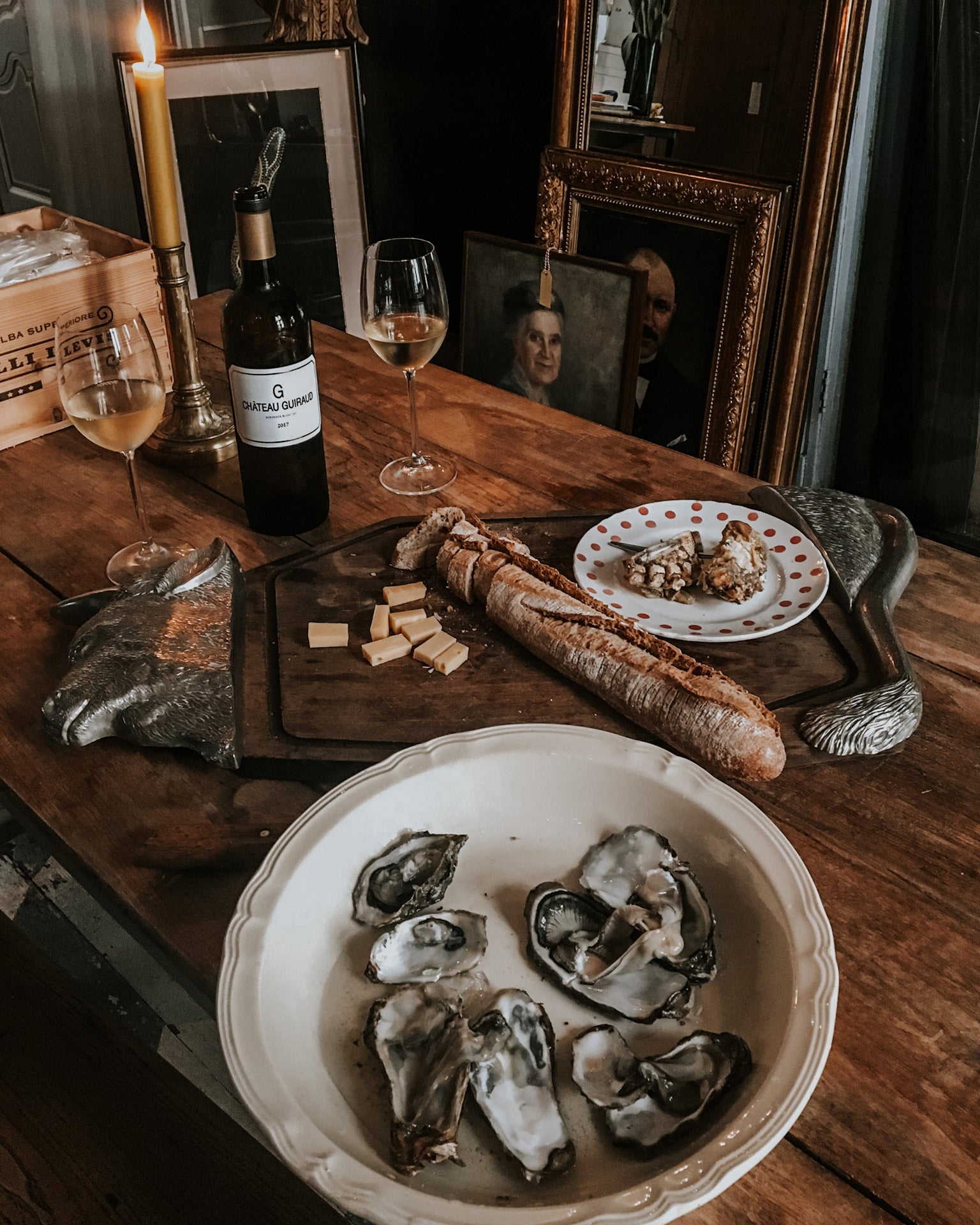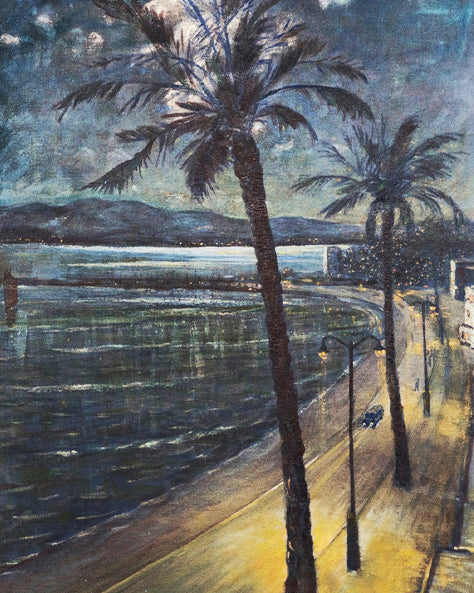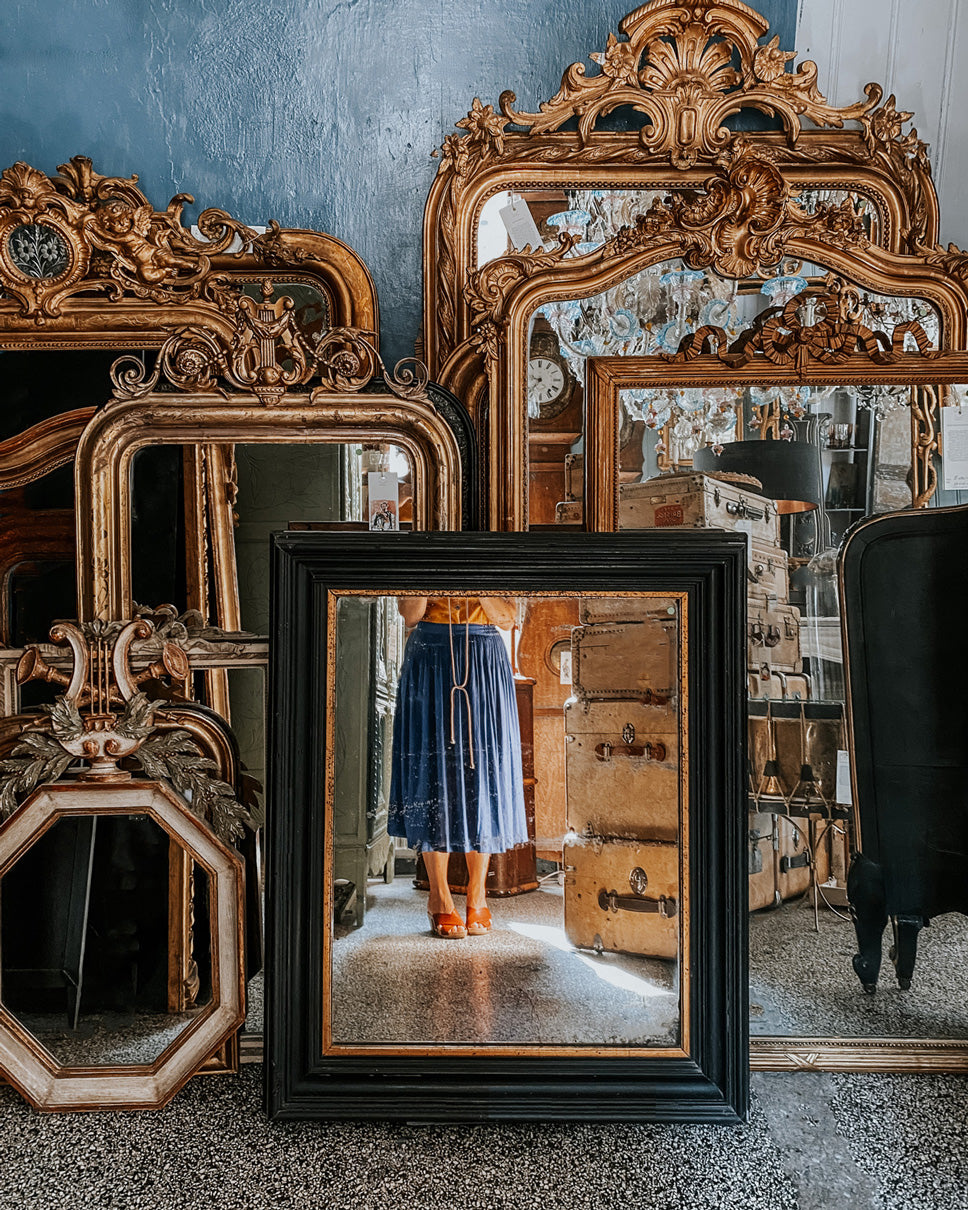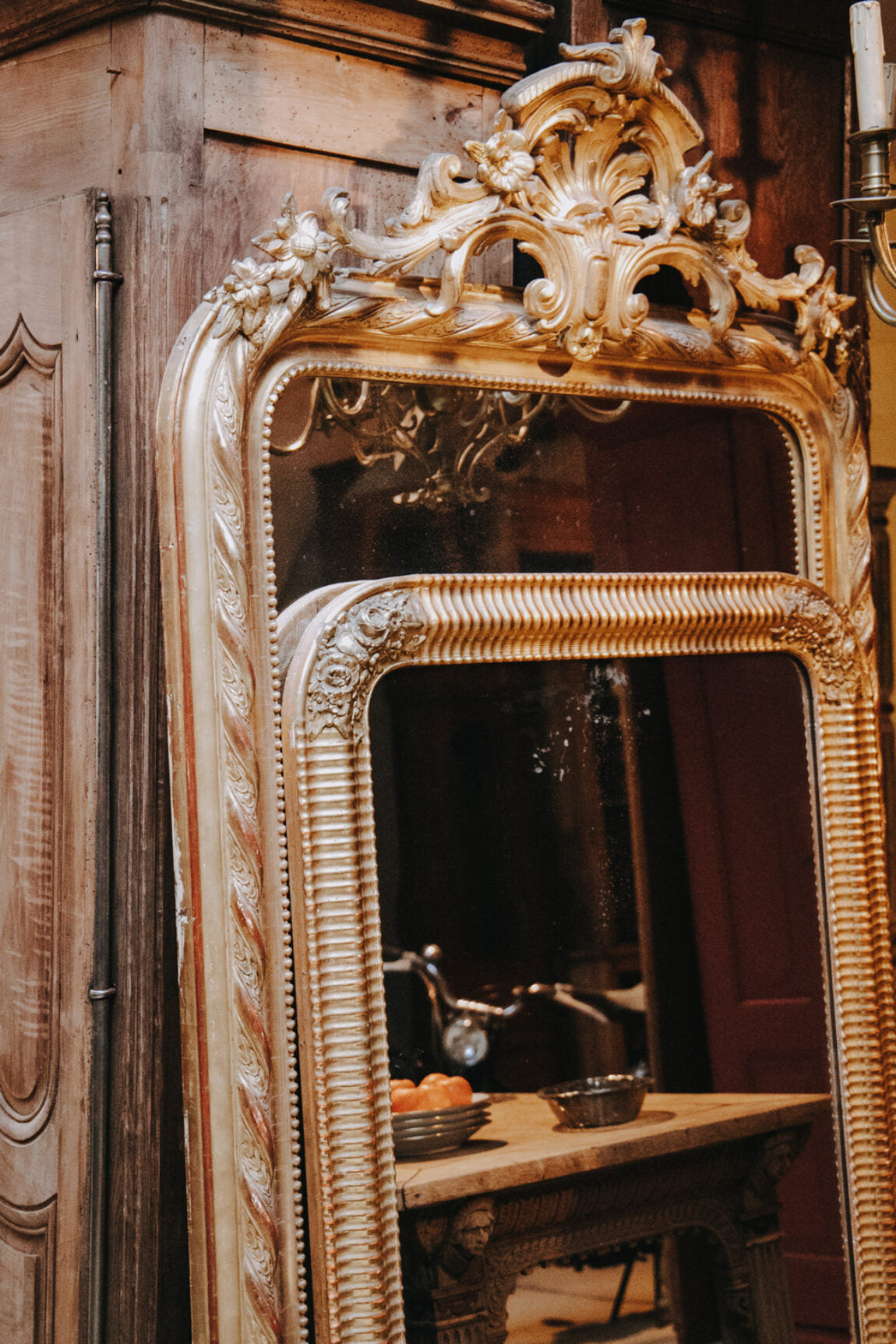Fake vs Real: How to spot a fake antique mirror from a real one?
Mirror, Mirror on the Wall... Is That One Even Antique at All?
How to tell if your “antique” mirror is the real deal—or just a good-looking imposter?
Let’s face it: antique mirrors aren’t just functional—they’re fabulous. And for centuries, they’ve been the It Girls of interiors. Shimmering symbols of wealth, status, and exquisite taste, they graced only the grandest salons and château boudoirs. These weren’t your average over-the-sink rectangles; they were gilded declarations of opulence, framed in gold, and designed to impress guests and the ghosts of French nobility.
But as with all icons, their popularity has inspired imitators. And in today’s world of slick reproductions and fast décor, it’s not always easy to spot a true antique mirror from a heartbreakingly convincing fake.
So, how can you tell if your mirror is genuinely old-world chic or just playing dress-up?
Let’s break it down:
The Frame
Worn-in is the new flawless. A real antique frame tells a story—with a few wrinkles. Expect signs of age: a soft darkening of the wood, the occasional chip, a hint of wormhole drama. If it looks too pristine, too perfect, or suspiciously fresh out of the factory— darling, it probably is. Bonus points for a wooden back (no MDF allowed here).
The Craftsmanship
Handmade beats machine-perfect every time. Antique frames have soul—and brush strokes. Their finishes are the result of hand-gilding, sanding, staining, and possibly even some candlelit carving. If the detailing looks too symmetrical or machine-polished, you're likely dealing with a modern clone.
The Glass
Imperfections are everything. Antique glass is gloriously flawed. Look for those delicious little waves, subtle warping, and tiny trapped air bubbles that whisper, I was born in another century. Mercury-backed glass (yes, actual mercury) may show gentle greying, golden veils, or cloud-like spots that vary wildly in size. If the glass is flawlessly clear and still thinks it's 2023... next!
Feel the Weight of History
Authentic antique glass has gravitas—literally. It’s heavy. Dense. Substantial. The kind of weight that says, I’ve survived centuries, darling.
So here’s a quick test: pick it up. If it practically floats into the air like a helium balloon at a garden party? Sorry to say, it’s probably a modern lightweight masquerading as the real thing. A true antique mirror has presence—and your biceps will confirm it.
The Hue
Old mirrors see the world through tinted glass. Modern mirrors are all icy and bright—but antique glass tends to mellow with age. A soft grey, faint yellow, or even a slight sepia tone? Yes please. That’s the kind of patina you can’t fake (though many try).
The Provenance
If it doesn’t come from someone who knows their Louis XV from their Louis Vuitton… buyer beware.
This is where we come in. At Wildschut Antiques, we’ve hunted mirrors in misty French attics, bargained in dusty barns, and whispered sweet nothings to sellers from Provence to Picardy. We live for these beauties—and only offer mirrors with the kind of pedigree that makes a statement and starts a conversation.
So, if you’re yearning for that perfect antique mirror—the kind that makes your hallway whisper “Versailles vibes”—do yourself a favor: skip the guessing games and buy from a source who knows their sparkle from their sham.
We’ve got you.
(And yes, you should absolutely follow us for the juiciest mirror finds: @franse_spiegels and @wildschut_antiques)
Looking Glass Takeaway:
- Look for wear, not perfection in frames.
- Seek out bubbles, waves, and age spots in the glass.
- Expect handmade details and muted hues.
- Trust your dealer, not your gut (unless your gut has 30+ years of antique experience).
- And above all—buy the one that makes you swoon.

